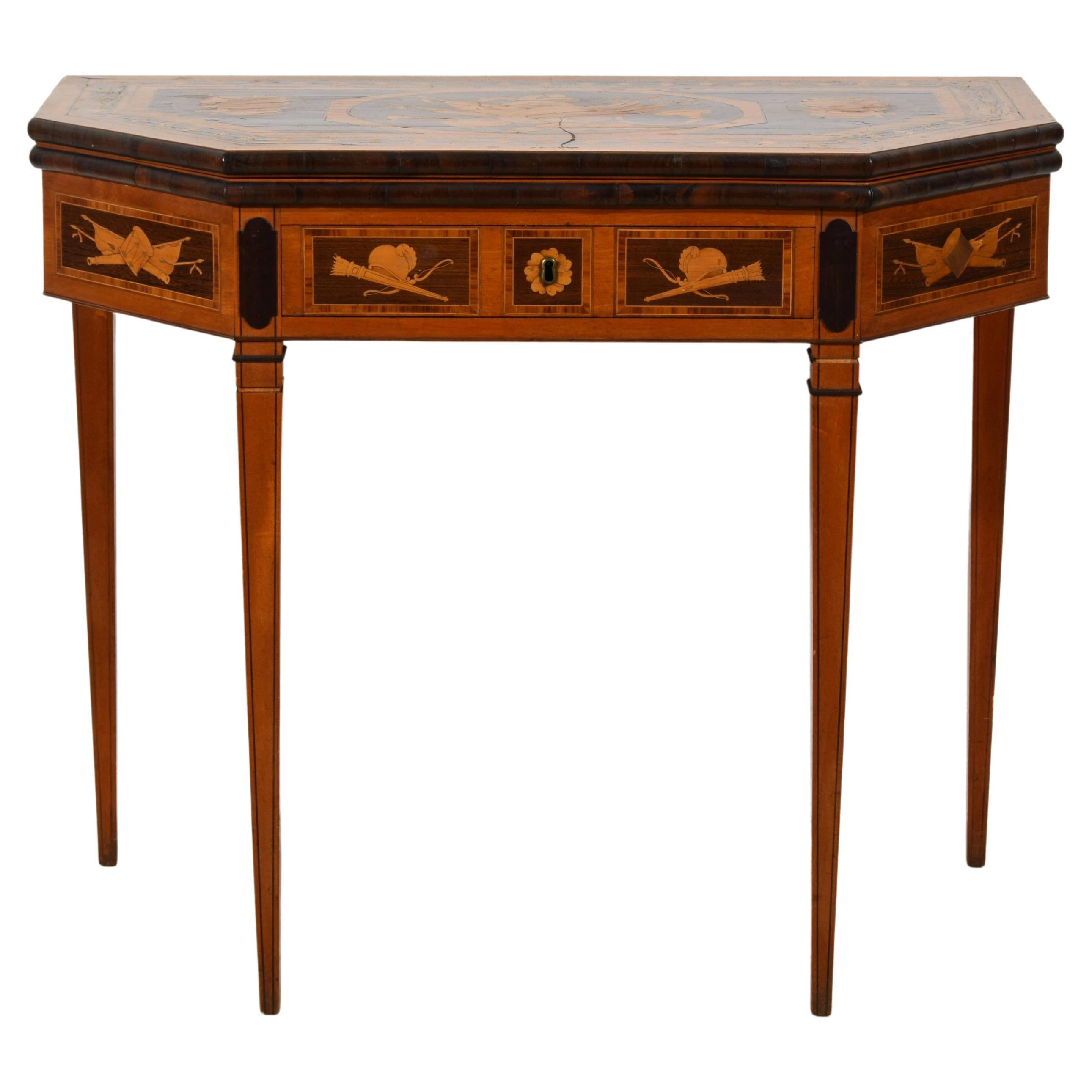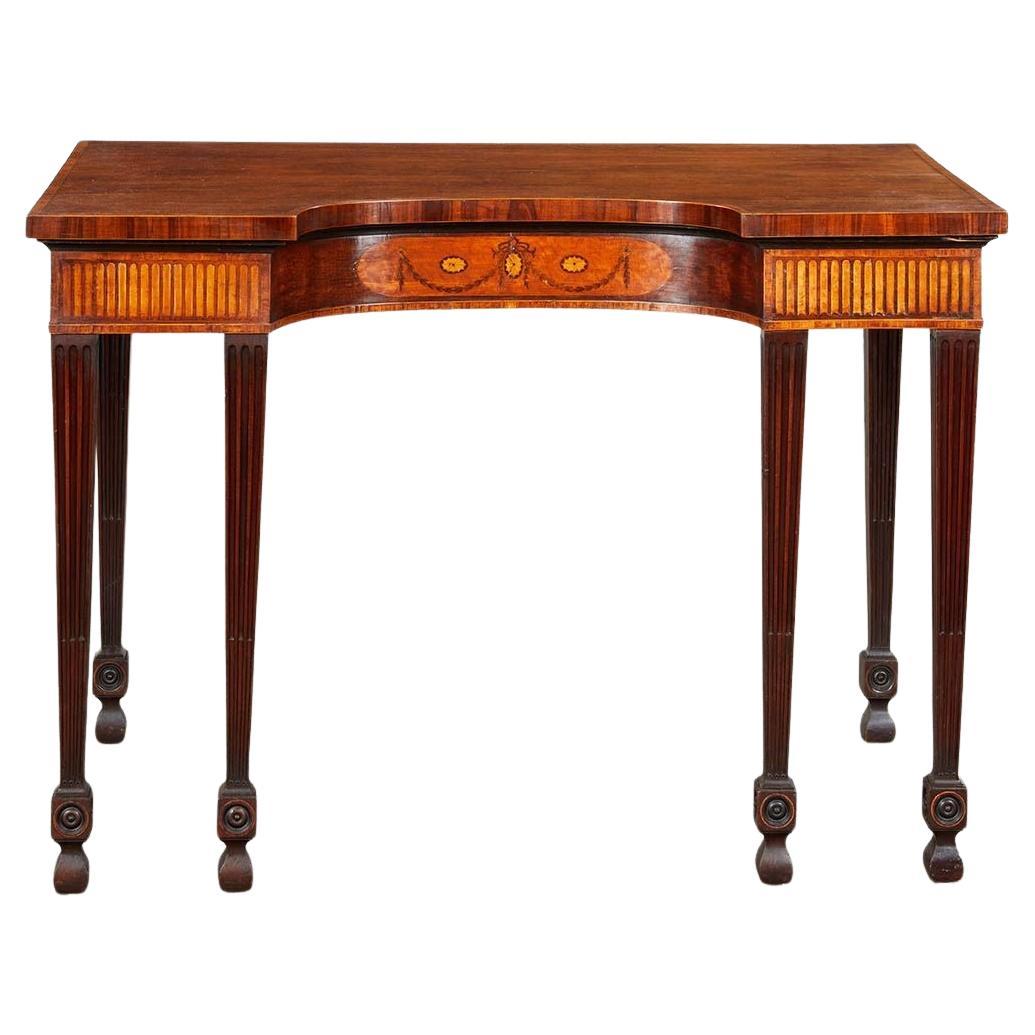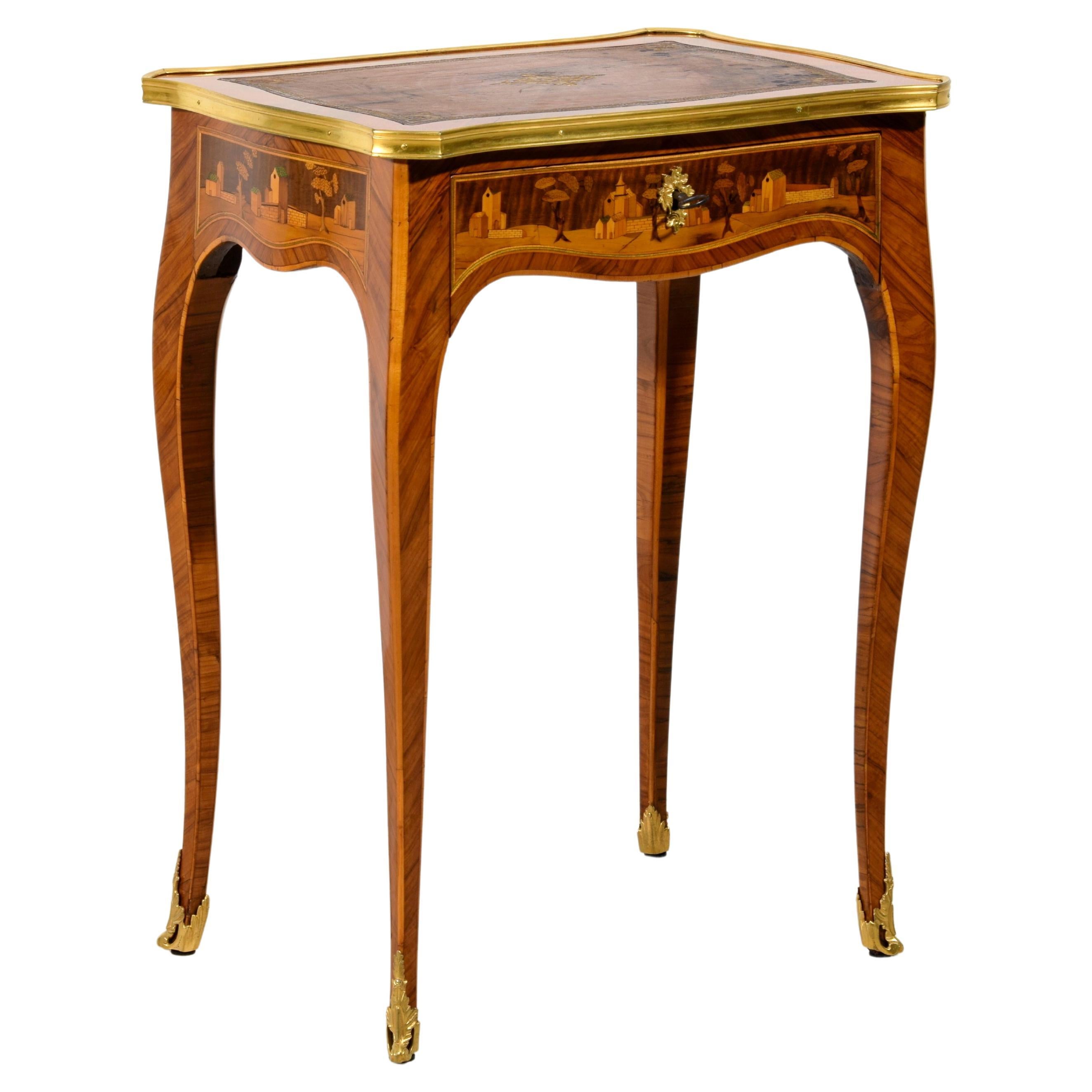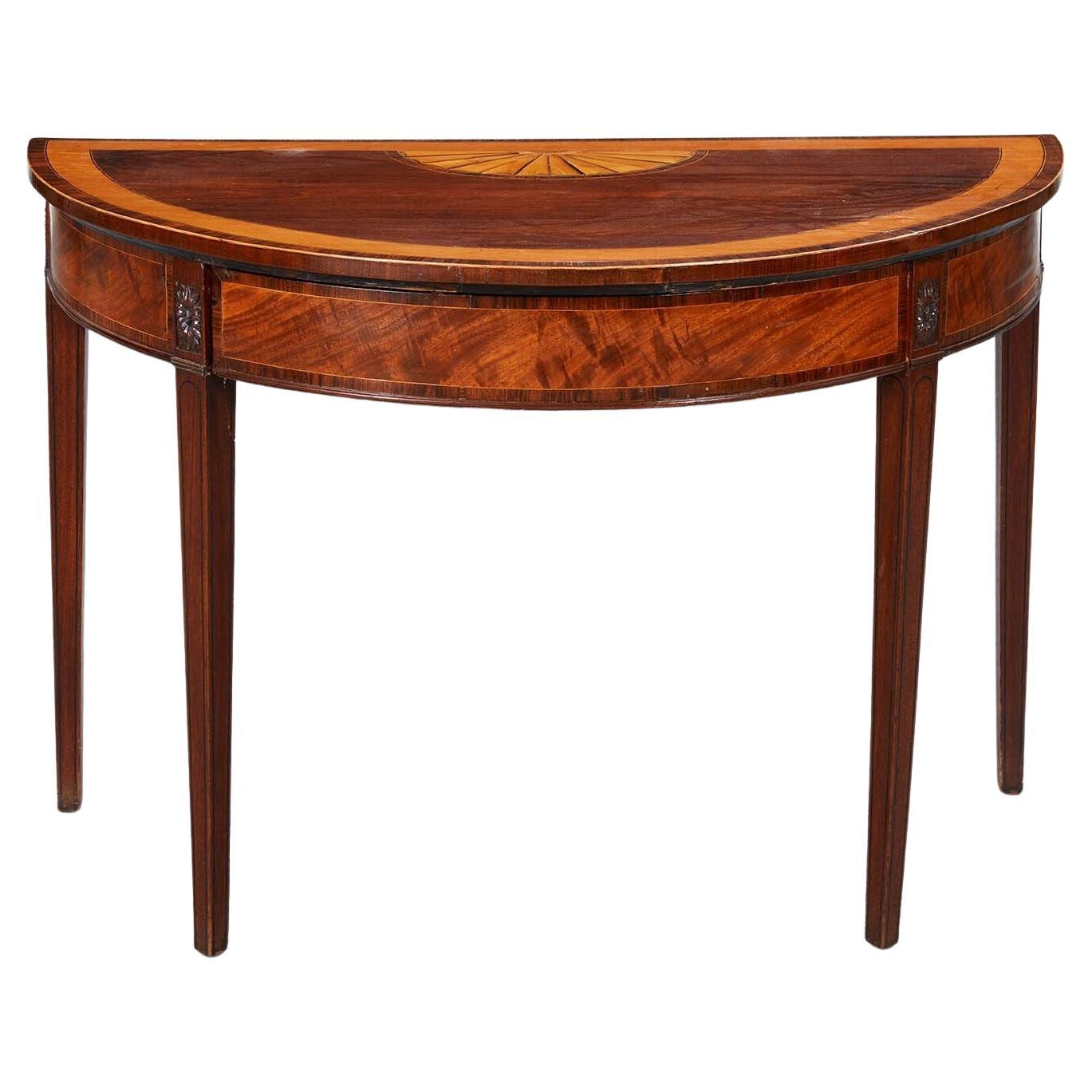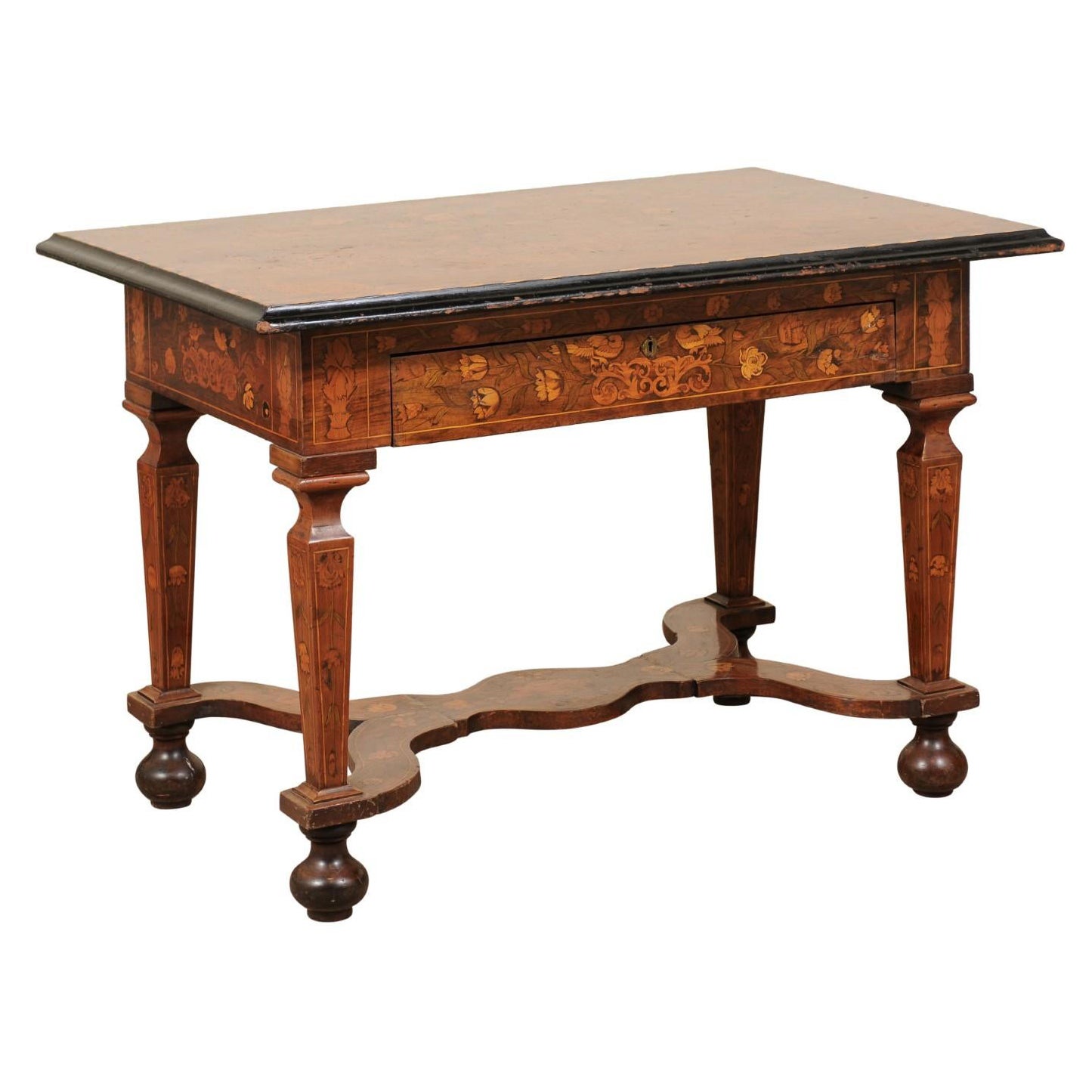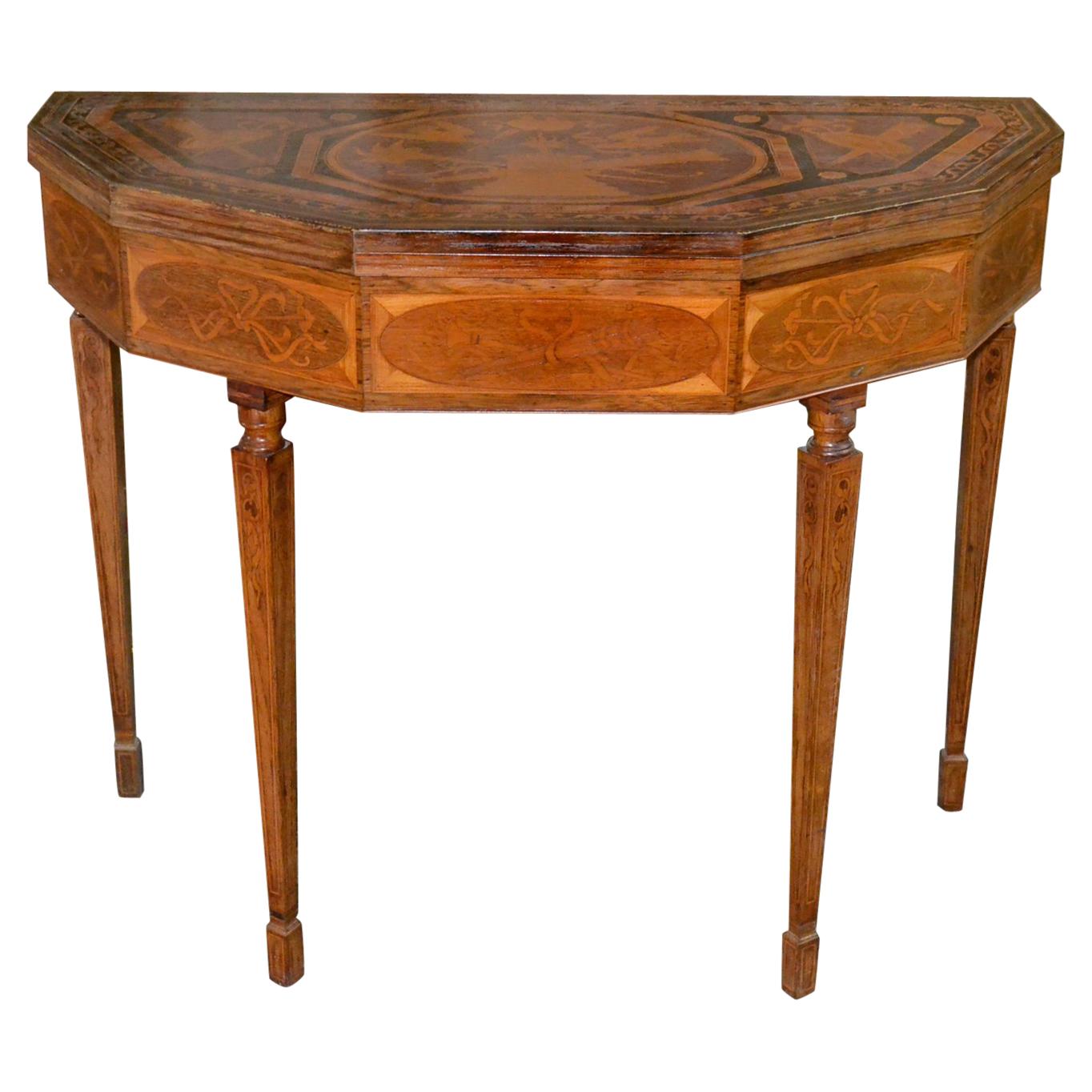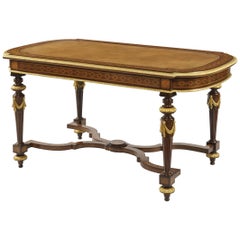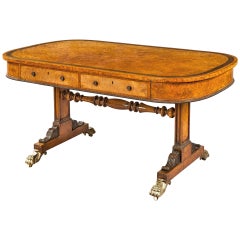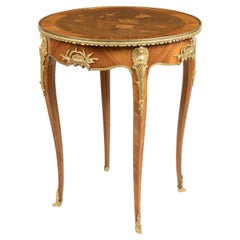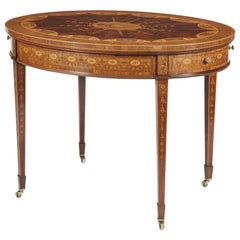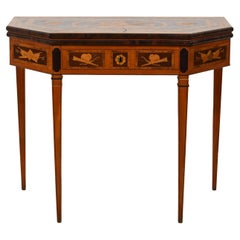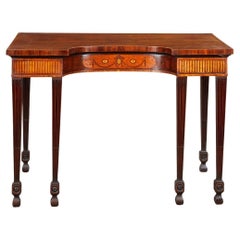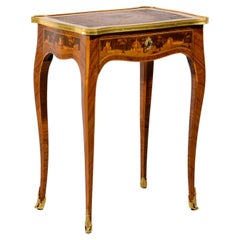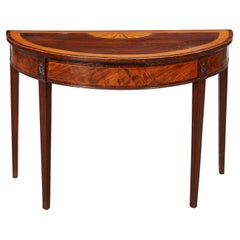Items Similar to 19th Century Coromandel and Inlaid Table Attributed to Jackson & Graham
Want more images or videos?
Request additional images or videos from the seller
1 of 7
19th Century Coromandel and Inlaid Table Attributed to Jackson & Graham
$102,735.31
£75,000
€88,382.78
CA$141,163.97
A$157,989.03
CHF 82,458.13
MX$1,926,651.79
NOK 1,055,351.87
SEK 999,025.70
DKK 659,588.95
Shipping
Retrieving quote...The 1stDibs Promise:
Authenticity Guarantee,
Money-Back Guarantee,
24-Hour Cancellation
About the Item
A magnificent library table
Attributed to Jackson & Graham
Of free standing rectangular form, constructed in coromandel, with inlays in thuya, ebony, boxwood, and honeysuckle; the fluted legs rising from square brass castor-shod feet; the frieze housing two lockable drawers fitted with rare ‘tamper proof’ Chubb locks and having quadrant moulded cedar lined interiors; the platform having a central panel of beautifully chosen matched coromandel veneers, with an outer guard border of a running pattern of stylised anthemions; the ebony edges having a thumb nail moulding,
circa 1865
The firm of Jackson & Graham established in 1836 by Thomas Jackson and Peter Graham at 37 Oxford Street London, and for the next fifty years produced predominately high quality furniture and represented Britain at many of the international exhibitions. Their clients included Queen Victoria, Napoleon III, the Grand Khedive of Cairo and the royal palace in Siam. They were particularly noted for their fine marquetry work, the use of Wedgwood plaques, rare woods, and fine casting of bronze mounts. They engaged the leading designers of the period, inter alia, Owen Jones, Bruce Talbert, Alfred Lorimer and Eugene Prignot. In the mid-1850s the workforce was recorded as 250, and by 1875, the company was employing 600 workers. They were feted exhibitors at many of the Great Exhibitions of the 19th century, and frequent prize winners. At the Paris International Exhibition of 1878, the furniture jury noted of them ‘ the workmanship is so perfect that even with the aid of a magnifying glass scarcely the slightest imperfection is to be found’. In 1885 the company was absorbed by Collinson and Lock, who continued their standard of excellence.
Charles Chubb was apprenticed as a blacksmith before starting business as a ships’ ironmonger in Winchester. Jeremiah soon joined the business, and by 1818 the brothers had branched out into lockmaking, founding the famous Chubb Company.
The business really got started when Jeremiah Chubb patented his new ‘detector lock’ in 1818. The lock was constructed so that if someone tried to pick it or open it with the wrong key it became inoperable. To make the lock work again the owner had to use a special key supplied with the lock. The aim of the detector lock was to prevent burglaries, and to warn the owner that someone had tried to break into their property.
The lock soon became popular, and sales of the Chubbs’ products increased even more when they won a government competition to design a lock that could only be opened using its own key. After the invention of the detector lock, the Chubbs decided to move to Wolverhampton, which already had an established lock making industry. By 1838 they were making 28,000 locks a year at their Wolverhampton factory. Another product was added to the Chubb range in 1835 when a patent was taken out for a burglar resistant safe, and in 1837 the Chubb safe works were opened in London. By the mid-1840s ‘Chubb’ had become a household name, appearing in playbills and popular verses of the time. When Charles Chubb died in 1846, his son John took over the business. The firm remained in Wolverhampton, and continued to make locks, keys and other security products under the directorship of members of the Chubb family until well into the 20th century. Chubb locks are still made in Wolverhampton today.
- Attributed to:Jackson & Graham (Cabinetmaker)
- Dimensions:Height: 30 in (76.2 cm)Width: 54.5 in (138.43 cm)Depth: 34 in (86.36 cm)
- Materials and Techniques:Brass,Ebony,Macassar,Wood
- Place of Origin:England
- Period:19th Century
- Date of Manufacture:circa 1865
- Condition:Repaired: Each item has undergone careful inspection and restoration by a conservation specialist in order to guarantee the original quality and integrity of the object. Wear consistent with age and use.
- Seller Location:London, GB
- Reference Number:Seller: 94861stDibs: LU954722416012
About the Seller
5.0
Recognized Seller
These prestigious sellers are industry leaders and represent the highest echelon for item quality and design.
Established in 1964
1stDibs seller since 2012
53 sales on 1stDibs
Typical response time: 6 hours
Associations
The British Antique Dealers' AssociationLAPADA - The Association of Arts & Antiques Dealers
- ShippingRetrieving quote...Shipping from: London, United Kingdom
- Return Policy
Authenticity Guarantee
In the unlikely event there’s an issue with an item’s authenticity, contact us within 1 year for a full refund. DetailsMoney-Back Guarantee
If your item is not as described, is damaged in transit, or does not arrive, contact us within 7 days for a full refund. Details24-Hour Cancellation
You have a 24-hour grace period in which to reconsider your purchase, with no questions asked.Vetted Professional Sellers
Our world-class sellers must adhere to strict standards for service and quality, maintaining the integrity of our listings.Price-Match Guarantee
If you find that a seller listed the same item for a lower price elsewhere, we’ll match it.Trusted Global Delivery
Our best-in-class carrier network provides specialized shipping options worldwide, including custom delivery.More From This Seller
View All19th Century Marquetry Writing Table in the manner of Holland & Sons
Located in London, GB
A good writing table in the Manner of Holland & Sons
Constructed in mahogany, with specimen wood inlays, and gilt bronze mounts; of rectangular form, with bowed ends, rising from ri...
Category
Antique 19th Century British Victorian Desks and Writing Tables
Materials
Ormolu, Bronze
19th Century English Regency Amboyna and Brass Inlay Library Table
By Gillows of Lancaster & London
Located in London, GB
A library table in the manner of Gillows
Constructed in amboyna, with cut gold brass inlay work, and bronze feet; of rectangular panelled end support form, braced by pairs of car...
Category
Antique 19th Century English Regency Desks and Writing Tables
Materials
Brass
19th Century Marquetry Inlaid & Ormolu Table attributed to François Linke
By François Linke
Located in London, GB
A Very Fine Marquetry Inlaid Occasional Table
Firmly Attributed to François Linke
This fine table, closely related to other examples by François Linke, is...
Category
Early 20th Century French Side Tables
Materials
Ormolu
19th Century Mahogany and Satinwood Astrological Marquetry Centre Table
By Maple & Co.
Located in London, GB
A fine quality astrological centre table
firmly attributed to Maple & Co
Constructed in very finely figured mahogany and satinwood, and having marquetry inlay of superior quality...
Category
Antique Late 19th Century English Victorian Center Tables
Materials
Mahogany, Satinwood
Mahogany Serving Table of the Georgian Period
Located in London, GB
A fine George IV serving table
Constructed from richly patinated mahogany, the rectangular serving table rising from turned and tapering reeded legs; the top supported by a carved...
Category
Antique 1820s European Georgian Sideboards
Materials
Mahogany
19th Century Amboyna Library Table in the Manner of Morel & Seddon
By Morel & Seddon, Edwards & Roberts
Located in London, GB
A library table in the manner of Morel & Seddon later retailed by Edwards and Roberts
Of kidney form, the sled bases, standing on oblate bun feet having spandrel blocked end suppo...
Category
Antique Early 19th Century English George IV Tables
Materials
Amboyna
You May Also Like
19th Century, English George III Inlaid Console and Game Table
Located in IT
19th Century, English George III Inlaid Console and Game Table
Measures: closed: cm W 92,5 x D 46,5 x H 78,5; open: cm W 92,5 x D 93 x H 76,5
This refined console table can be tra...
Category
Antique Early 19th Century English George III Game Tables
Materials
Wood
Inlaid Serving Table Attributed to Ince and Mayhew
By Mayhew & Ince
Located in Greenwich, CT
A fine small mahogany inlaid serving table attributed to Mayhew and Ince, circa 1775 having a banded mahogany top set off with stringing and having a concave indentation above an in...
Category
Antique Late 18th Century English Console Tables
Materials
Mahogany, Satinwood
19th Century, France Inlaid Wood Centre Table
Located in IT
19th Century, France inlaid wood centre table
This elegant centre table in inlaid wood was made in France in the early 19th century.
The rectangular top has shaped and wavy side...
Category
Antique Early 19th Century French Restauration Center Tables
Materials
Bronze
Georgian Inlaid Demilune Table
Located in Greenwich, CT
Fine George III purpleheart demilune console table with fine inlays, the top with satinwood, harewood, rosewood and holly fan inlay with rosewood and satinwood crossbanding, the apro...
Category
Antique 1780s English George III Console Tables
Materials
Mahogany, Purpleheart, Satinwood
19th Century Continental Marquetry Inlaid Center Table
Located in Atlanta, GA
A 19th century continental rectangular form center table featuring marquetry inlay with foliage, flowers, birds and figures. The ebonized boarder top above single large drawer in fri...
Category
Antique 19th Century European Center Tables
Materials
Boxwood, Fruitwood, Walnut
19th Century Italian Inlaid Game Table
Located in Dallas, TX
Wonderful 19th century Italian neoclassical inlaid mahogany game table.
Category
Antique 19th Century Italian Neoclassical Game Tables
Materials
Mahogany
$2,760 Sale Price
34% Off
